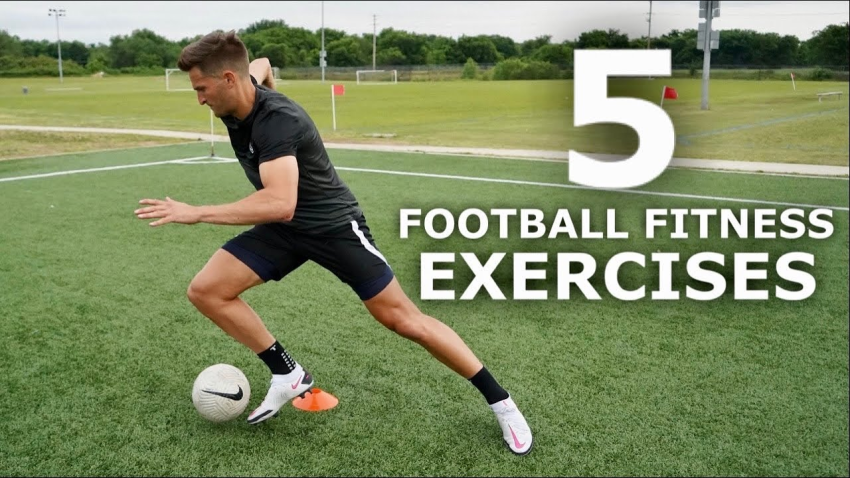Football fitness is an essential foundation for success in the world of sports, where the demands of the game require not just skill but peak performance. To thrive on the pitch, athletes must engage in rigorous football training regimens designed to enhance strength, endurance, agility, and overall athletic performance. By incorporating comprehensive football strength and conditioning techniques along with effective injury management in football, players can build resilience against common sports injuries while improving their game. This article delves into the various facets of football fitness, exploring how tailored training can help athletes reach their peak performance and maintain their competitive edge. Emphasizing a personalized approach is key, as each athlete’s journey is unique and requires specific attention to their training needs.
When discussing athletic conditioning, especially in the context of the beautiful game, terms like physical preparation and performance optimization come into play. The realm of football fitness encompasses a wide range of training techniques and methodologies that athletes utilize to enhance their skills and capabilities. With a spotlight on individual performance enhancement, players engage in specialized training that supports endurance and strength, crucial for success on the field. Moreover, addressing injury prevention strategies becomes a fundamental pillar for sustaining long-term athletic engagement and excellence. This comprehensive exploration will guide readers through the multifaceted world of football fitness, underscoring the importance of a well-rounded training approach for aspiring players.
The Importance of Football Strength and Conditioning in Training Regimens
In football, strength and conditioning are critical pillars for athletes seeking peak performance. A deliberate focus on these elements allows players to develop power, speed, and endurance necessary for both offensive and defensive roles. Football strength and conditioning programs incorporate resistance training, plyometrics, and aerobic exercises designed to create a well-rounded athlete. For instance, engaging in compound movements, such as bench presses and squats, not only enhances overall strength but also translates into improved on-field performance by enabling players to tackle, sprint, and resist opposing players more effectively.
Moreover, a structured conditioning regime plays a decisive role in recovery and injury management in football. Customizing strength training protocols ensures that athletes address specific weaknesses and imbalances, which is crucial for preventing common injuries like strains and sprains. Facilities that specialize in football training, like West Hills Athletic Club, emphasize the integration of sport-specific conditioning, allowing players to progressively overload their musculoskeletal systems while focusing on injury prevention strategies. By prioritizing these aspects, players can maintain higher training loads while minimizing their injury risk.
Frequently Asked Questions
What are the best training regimens for enhancing football fitness?
To enhance football fitness, athletes should focus on a well-rounded training regimen that includes strength training, endurance conditioning, and agility drills. Strength training exercises like squats and deadlifts build essential leg power, while HIIT and aerobic sessions improve endurance necessary for prolonged match performance. Incorporating agility ladder and cone drills aids in developing quick change-of-direction skills. A balanced approach alongside proper recovery strategies is vital for peak performance.
How does strength and conditioning relate to injury management in football?
Strength and conditioning are critical for effective injury management in football. A tailored football strength and conditioning program helps athletes develop muscle strength and stability, reducing the risk of injuries. Key exercises target sport-specific muscle groups, ensuring balanced development. Additionally, incorporating mobility and recovery techniques like foam rolling or physical therapy can further aid in preventing injuries, allowing players to maintain peak performance during the season.
| Key Component | Description | Benefits |
|---|---|---|
| Strength Training | Focuses on exercises like squats, deadlifts, and lunges to build muscle strength. | Improves power, control, and injury prevention. |
| Endurance Conditioning | Includes HIIT and aerobic sessions to improve cardiovascular health. | Enhances stamina to maintain performance across a full match. |
| Agility and Mobility Drills | Involves agility ladders, cone drills, and plyometrics. | Boosts quickness and coordination for better on-field performance. |
| Recovery Strategies | Focuses on active recovery, hydration, and nutrition. | Reduces muscle fatigue and injury risks. |
Summary
Football fitness is the cornerstone for athletes striving for optimal performance on the pitch. Achieving peak performance in football requires a comprehensive understanding of the physical demands involved. This involves not only a commitment to strength and endurance training but also agility drills and well-planned recovery strategies. Athletes must prioritize personalized training regimens that cater to their unique needs and challenges. By integrating these elements, including recovery protocols exemplified by professional athletes, players can enhance their performance while minimizing the risk of injury. Ultimately, the future of football fitness lies in the synergy between tailored training approaches and evolving methodologies in sport science, ensuring that athletes continually improve their capabilities.
